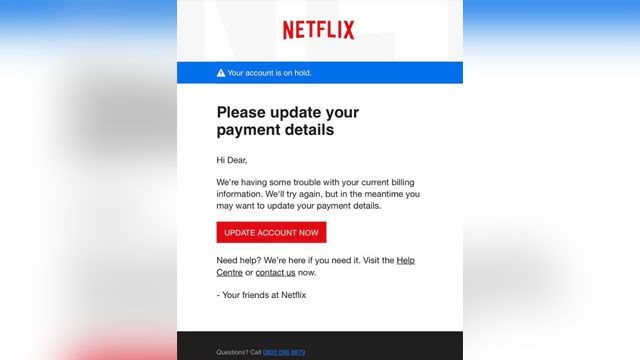
Phishing emails are a common way for scammers to steal personal and financial information. These emails often claim that the recipient’s account has been locked or suspended, and they ask the recipient to click on a link to unlock it. However, the link in the email actually takes the recipient to a fake website that looks like the real website of the company. Once the recipient enters their personal information on the fake website, the scammer can steal it.
Here are some detailed and longer tips to help you spot and avoid phishing emails that claim your account is locked:
- Do not click on links in emails from unknown senders. Even if the email looks like it is from a legitimate company, it is best to err on the side of caution and not click on the link. If you are unsure whether the sender is legitimate, you can hover your mouse over the sender’s email address to see the actual email address. If the email address does not match the company’s domain name, it is likely a phishing email.
- Be suspicious of any email that asks for your personal or financial information. Legitimate companies will not ask for this information over email. If you receive an email asking for your personal or financial information, do not reply to the email or click on any links in the email. Instead, contact the company directly using the phone number or email address on their website.
- Check the email address carefully. Phishing emails often come from addresses that are similar to the addresses of legitimate companies, but they may have a few letters or numbers that are different. For example, an email from “amazon.com” may actually be from “amazon-com.net.”
- Look for grammatical errors or typos. Phishing emails are often poorly written, and they may contain grammatical errors or typos. Legitimate companies will take the time to proofread their emails before sending them out.
- If you are unsure whether an email is legitimate, you can always contact the company directly using the phone number or email address on their website. This is the best way to confirm whether the email is legitimate or not.
If you think you have received a phishing email, you can report it to the Federal Trade Commission (FTC). You can do this online at ftc.gov/complaint or by calling 1-877-FTC-HELP.
By being aware of the risks and taking steps to protect yourself, you can help avoid falling victim to these scams.
Here are some additional tips to help you protect yourself from phishing scams:
- Keep your software up to date. Software updates often include security patches that can help protect you from scams.
- Use a strong password and change it regularly. Do not use the same password for multiple accounts.
- Enable two-factor authentication (2FA) whenever possible. 2FA adds an extra layer of security by requiring you to enter a code from your phone in addition to your password.
- Be careful about what information you share online. Do not share your personal information on social media or other websites.
- Be aware of the latest phishing scams. The FTC and other organizations often post warnings about new phishing scams. You can stay up-to-date on the latest scams by visiting the FTC website or subscribing to their email alerts.
By following these tips, you can help protect yourself from phishing scams and keep your personal and financial information safe.
I hope this article helps you spot and avoid phishing emails that claim your account is locked. If you have any further questions, please feel free to ask.





